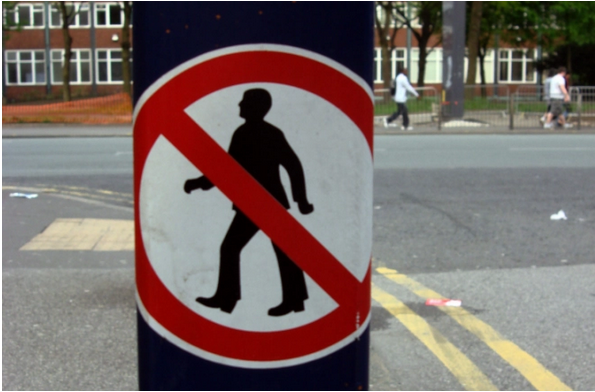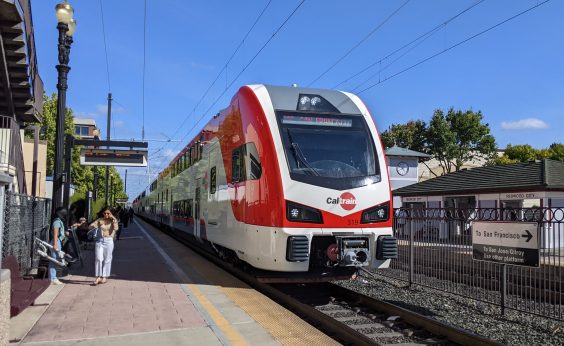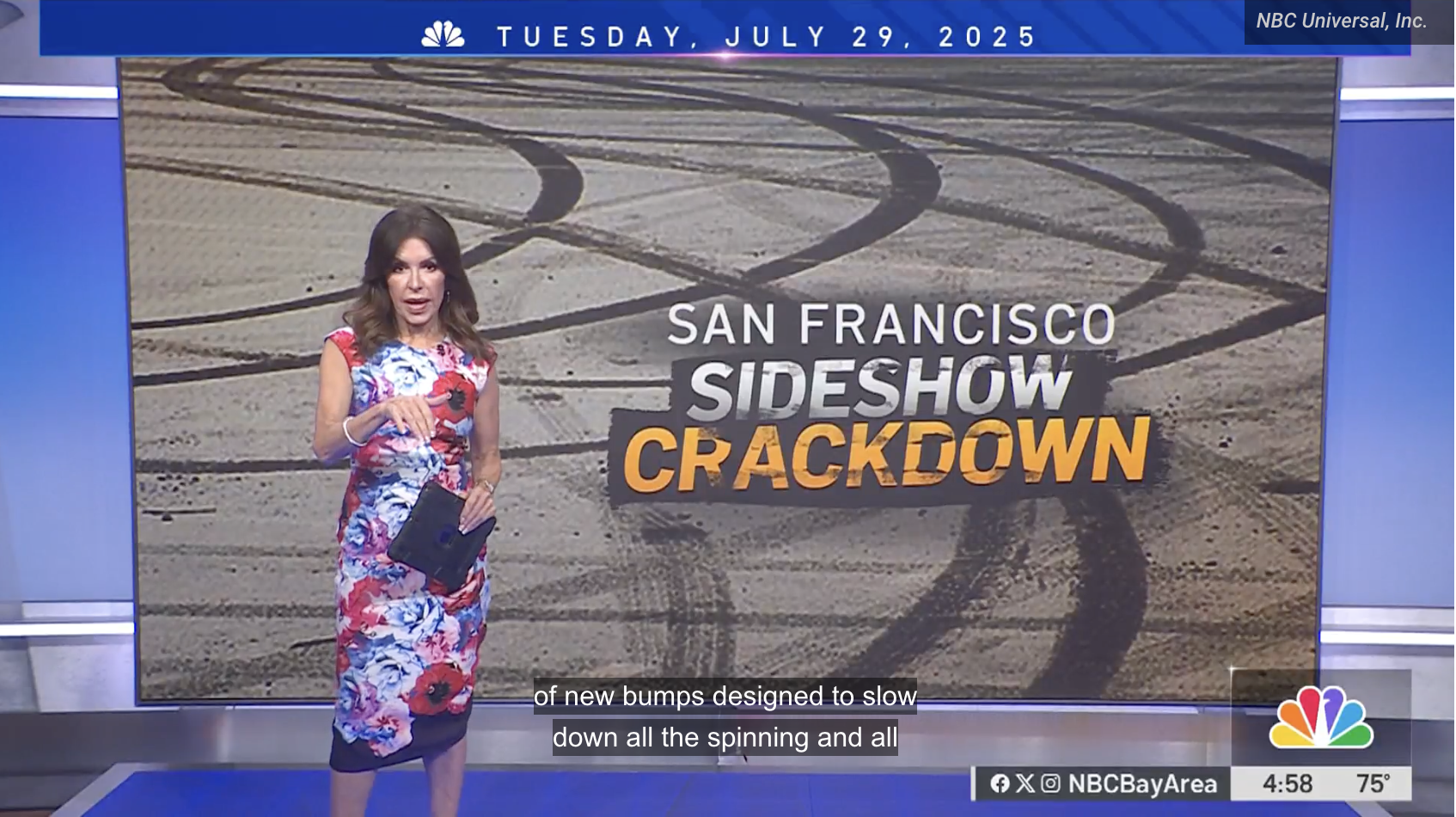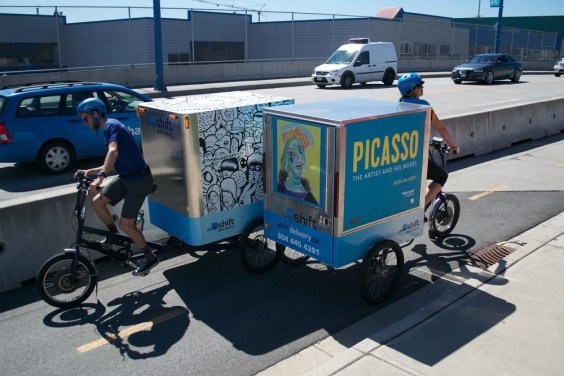A movement is growing to strike down racially biased and ineffective “jaywalking” laws across America — and the advocates behind these efforts say the path to doing it everywhere may be smoother than it has been in the past.
After Virginia decriminalized the act of crossing the street outside a designated crosswalk — which countless investigations have shown are often disproportionately enforced upon people of color — the state of California advanced similar legislation. After that, the Texas statehouse took up a bill that would make it legal to walk in the street even when there is a sidewalk nearby — inspired by the plight of a Plano teenager who was arrested by local police when the pedestrian path was rendered impassable by this February’s winter storms. A similar effort is underway in Kansas City — and advocates are hopeful that more reform may be on the horizon.
“This seemed like a really radical idea even just a few years ago,” said Angie Schmitt, pedestrian safety expert (and former editor of Streetsblog USA) in a recent webinar on the movement to decriminalize the practice. “It was proposed in Seattle and it never went anywhere. But thanks to the work of advocates in the streets, that’s changing.”
Practically from the moment they were lobbied into being by auto industry in the late 1920s, "jaywalking" laws have been used as a pretext for racist police harassment of people of color — harassment that too often escalates to outright police brutality. But even beyond the inherent dangers that jaywalking enforcement presents to BIPOC, the laws themselves have failed to make our streets safer; pedestrian deaths have climbed over 50 percent over the course of the last decade, hitting a record per-mile high last year.
But another insidious danger of jaywalking laws is how they subtly reinforce the false narrative that walkers themselves, rather than the proliferation of lethal road and vehicle designs that encourage dangerous driving, are to blame for pedestrian deaths. Many jaywalking stops happen on streets where the closest available crosswalk is hundreds of feet away, or placed in dangerous locations like slip lanes where walkers are wise to avoid them. Other stops happen because police are unclear about what even constitutes the crime, as Sacramento police were when they violently beat pedestrian Nandi Cain Jr. after he crossed in an unmarked (but still legal) crosswalk in his community.
“When I step outside my home, I step onto a street that doesn’t have a sidewalk,” said Michael Kelley, policy expert for Bike Walk Kansas City, who also participated in the event. “I have two little kids, and I want them to be able to grow up in a place where they have the same opportunities as everyone else. That can’t happen if we not only don’t invest in the infrastructure that allows them to thrive, but punish them for not using that non-existent infrastructure.”
Surprisingly, experts say police aren’t always strong proponents of criminalizing walking because they recognize that repealing them would free up resources for law enforcement to fight other forms of crime.
“When this bill was introduced during our special session, law enforcement did not testify in opposition to it,” said Patrick Hope, the Virginia delegate who introduced the pretextual policing bill in Virginia that launched the trend. “I haven’t heard from a peep from the police department. They want to be focusing on more serious crimes. But when you make something a law, the enforcers have to enforce it.”
Whether law enforcement will simply seize on other pretexts besides "jaywalking" to enact racist roadway stops, of course, is the question at the heart of the debate over whether the police should be abolished rather than reformed. The Virginia bill that Hope introduced decriminalized a slate of roadway behaviors that are frequently cause for over-policing, including using tinted window films on cars, having a noisy muffler, or simply because the officer claims he’s detected an odor of marijuana on a "suspect" — but some advocates worry such lists will never be long enough to reform a fundamentally racist institution.
“We’ve decided to drop that ‘E’ for enforcement [originally found in the ‘5 E’s of Vision Zero’ framework], period,” said Caro Jauregui, co-executive director for the Sacramento-based nonprofit California Walks. “We’re not interested in continuing to move forward with solutions for safe street that include enforcement or any type of policing.”
Jaywalking laws alone won’t remove racism from the street safety realm, but advocates think such reforms are critical — especially if they’re enacted in concert with policies that repair the harms caused to past victims of the policy.
“Restorative justice means dedicated funding to support specific portions of the community that have suffered the most,” said Kelley “If you overlay traffic crash data and air quality data over the map of Kansas City, it almost always falls on the [historically Black] east side. … We need specific funds to support those census tracts that have borne the brunt not just of over-enforcement, but of under-investment, too.”
At the end of the day, advocates are hopeful that repealing jaywalking laws is increasingly coming to be seen as the first rung on the ladder to comprehensive mobility justice — and one that states and cities could climb more easily than they think.
“I would challenge policymakers to ask themselves: is enforcing jaywalking making your community safer?” said Charles Brown, founder of Equitable Cities and the moderator of the panel. “And I think the answer is no.”






